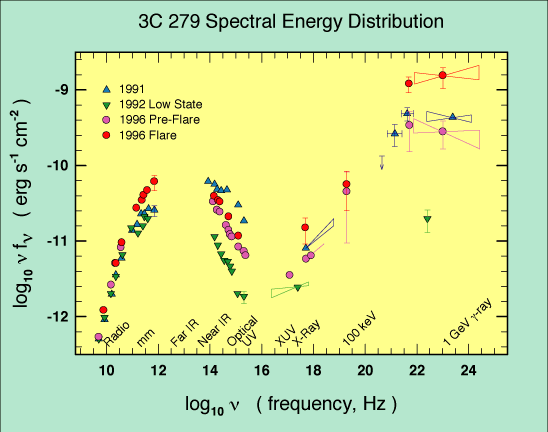Gamma-Ray Quasars

Click image for larger view
The spectral energy distribution for blazar 3C 279. The results shown in this plot summarize several multi-wavelength campaigns covering the frequency regions from the radio through the gamma-ray range observed by EGRET. The spectral properties seen in this figure are often observed to some degree in the other 90 blazars detected by EGRET. First, the double peaks suggest a two-component source, generally thought to be synchrotron radiation of electrons in a highly relativistic jet (radio through optical) and Compton scattering of low-energy photons by those same electrons in the jet (X-rays and gamma rays). The gamma-ray intensity often dominates in the emitted power, and the gamma-ray region is the most variable part of the spectrum. Variability time scales of less than a day have been seen, and even shorter scales are likely. The magnitude of the intensity in gamma rays implies a luminosity of over 1048 erg s-1 for 3C 279 if isotropy is assumed. Other blazar gamma-ray luminosities range from 1045 to 1048 erg s-1. High luminosities, the short time scale of the variations, and the presence of the IR to UV emissions (optically thin emission region) strongly point to a beamed source.
If you have a question about CGRO, please contact us via the Feedback form.

